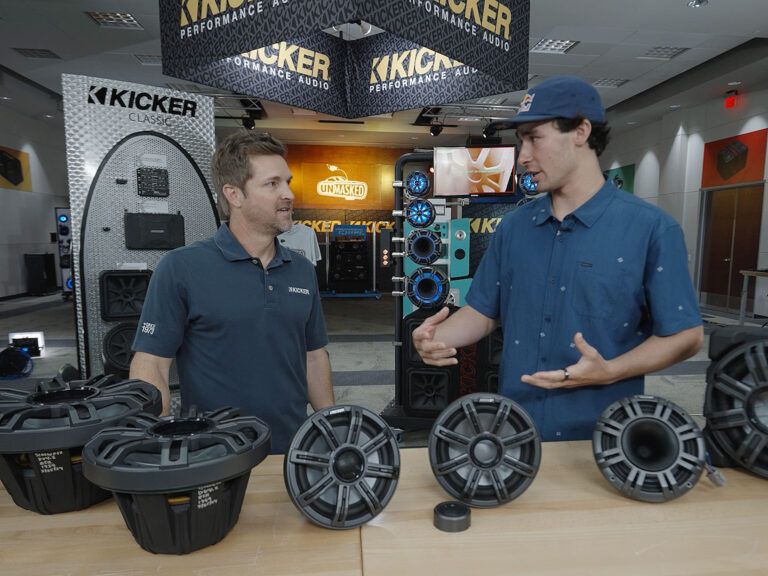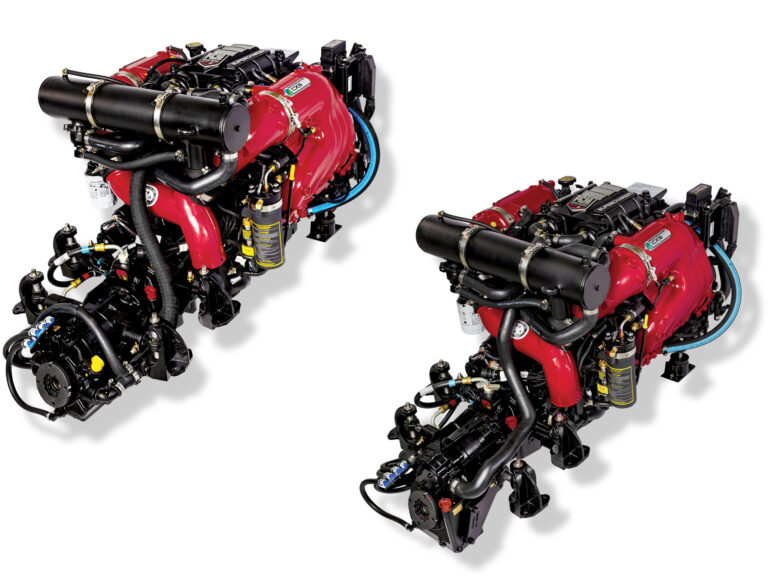It’s that time of year! Get yourself and your crew positioned to start off strong this season.
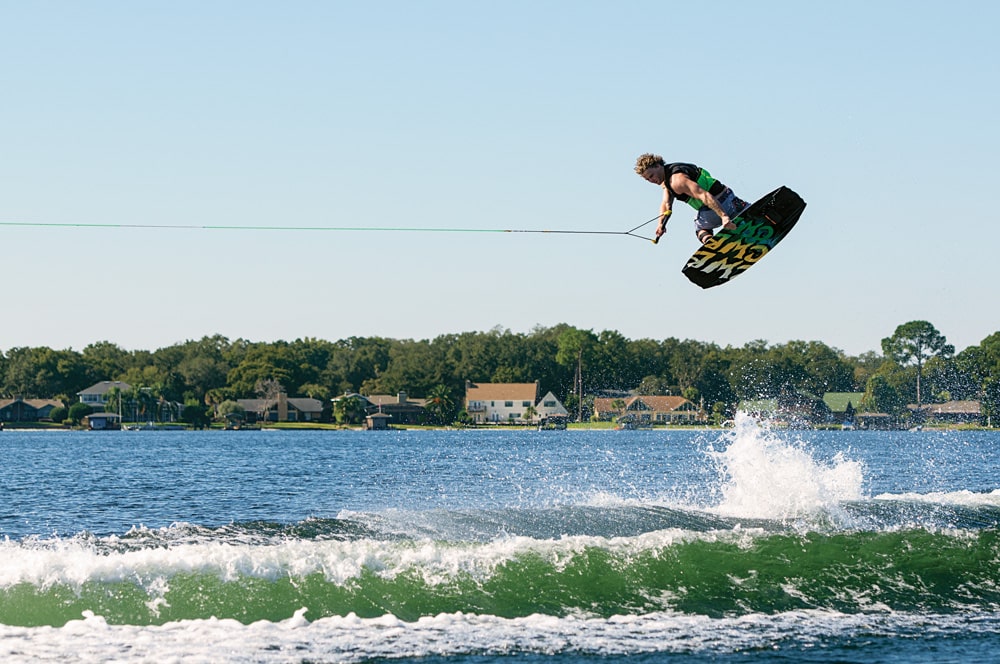
Ride with Confidence
Your summer is quickly approaching, and we know how much you’re champing at the bit to get back on the water. We want that as much as you do, but before you go gallivanting to the nearest waterway as soon as the ice melts, let’s discuss some off-season training principles that will help you get in shape physically and mentally. This way we can quickly and safely get your bag of tricks back to where it was at the end of last season — or better.
We’ve divided up this instruction into three sections: injury recovery, injury prevention and how to start riding again after a long off-season. In each section, we’ve hand-picked a few pro riders who bring a specific expertise to the table: Mike Dowdy, having just successfully recovered from an injury; Kyle Rattray, co-owner and trainer at Clermont CrossFit; and Shawn Watson, bringing 20 seasons of experience with him. It’s hard not to learn something with a lineup like this.
Admittedly, any training outside of wakeboarding does take effort and planning — so, one might ask, is it worth it? If you’ve never tried, then you don’t know what you’re missing. Being in shape mentally and physically sets you up for success on the water in a number of ways: You’re less prone to injury, you feel lighter on your feet, don’t tire as easily and, most of all, you’re more confident. This confidence is the key for consistency, learning new tricks, and increasing your style. After all, confidence and style are inseparably connected. Think about it for a minute: Have you ever seen a really stylish trick that was performed timidly? We didn’t think so.
Injury Recovery with Mike Dowdy
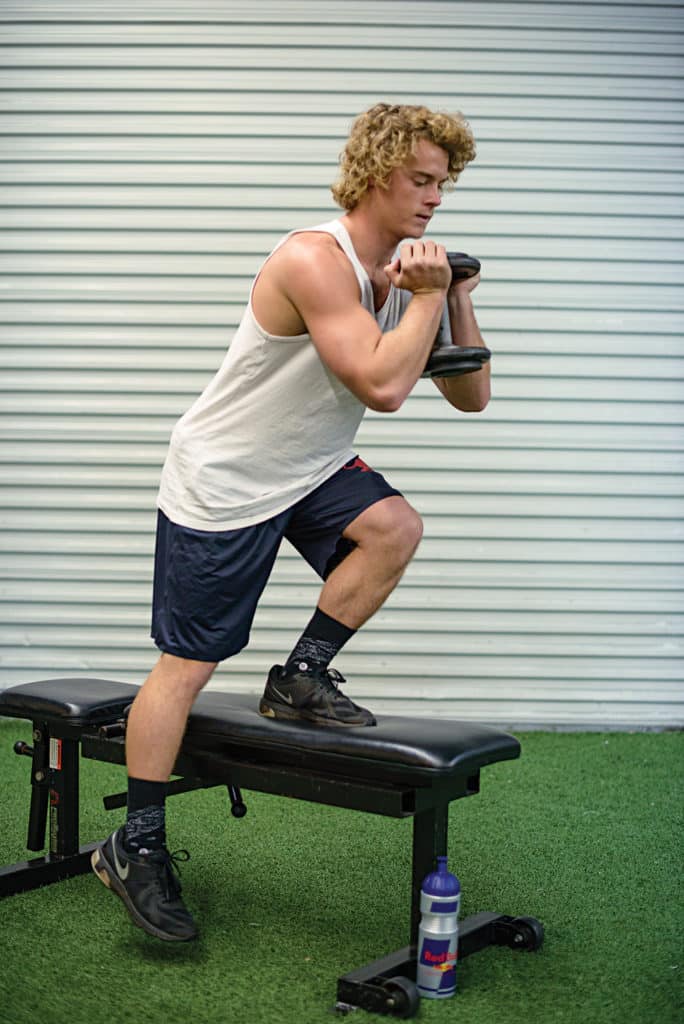
Early last year, Mike Dowdy tore his anterior cruciate ligament (ACL) on his left knee. After a thorough recovery, he’s back riding strong again. We caught up with Dowdy to get some insight on recovering from a significant injury like this.
Aside from the obvious physical recovery, there can also be some unanticipated emotional barriers to overcome. It’s important to have short-term and long-term goals to keep you positive through it all. “The day I got injured was pretty dark. I didn’t want to see or talk to anyone and was pretty emotional.” Dowdy recalls. “After surgery and for the first few months, I was pretty bored at home. There wasn’t much I could really do. The hardest part for me was watching all the other riders while I was just lying in bed. At first I kept looking at it as a burden to have been injured, but now I see it differently. It helped me get strong physically and mentally. I think what helped the most was having something specific to work on every day to help me progress.”
This is where the direction from your doctors comes into play. There’s a lot more to a recovery than merely the absence of pain. Dowdy says: “I learned a lot from all the doctors in my inner circle. They taught me a ton about the way the body works, what to eat, what not to eat, and what stretches and warm-ups to do.”
Relying on the expertise of a physical therapist can make all the difference in your recovery. Each injury affects a specific area that can be targeted with the right type of exercises. Dowdy says: “The exercise that helped me the most are called ‘step-ups,” which are basically how they sound. I would hold a 25- or 30-pound dumbbell in my hands, place one foot up on a box or bench, one on the floor, and then step all the way up and back down. I’d do 10 or 15 reps three times, and then switch legs. I’ve done this exercise nearly every day since my injury. It really got my quads firing, and it played a huge role in getting me back to normal function.”
Injury Prevention with Kyle Rattray
It’s pretty obvious that most on-the-water injuries occur during the landing impact. Most of us chalk it up to a mistake made at takeoff, but what if there was something that you could do off the water to prevent some of these landing injuries? We brought Kyle Rattray in to enlighten us on the subject. Referring to these unnecessarily rough landings, Kyle says: “I feel that it is due to the rider’s inability to decelerate and absorb impact properly. So many people absorb impact by hinging at the hip, keeping their legs stiff, and diving their chest forward. Not absorbing impact properly, I feel, directly results in a lot of knee, hip and lower-back injuries.”
INCORRECT:
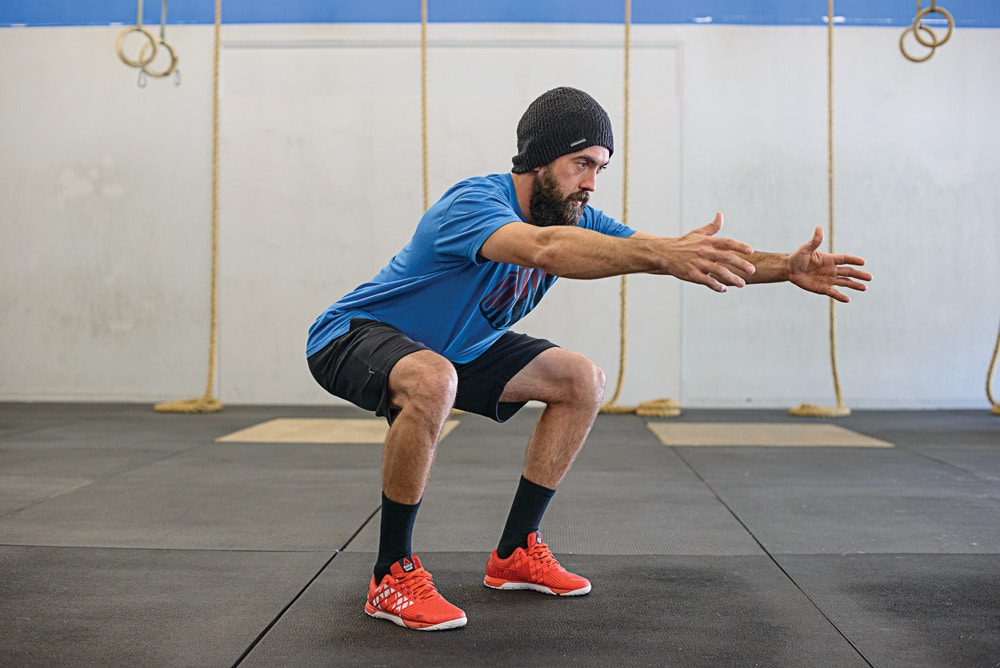
CORRECT:
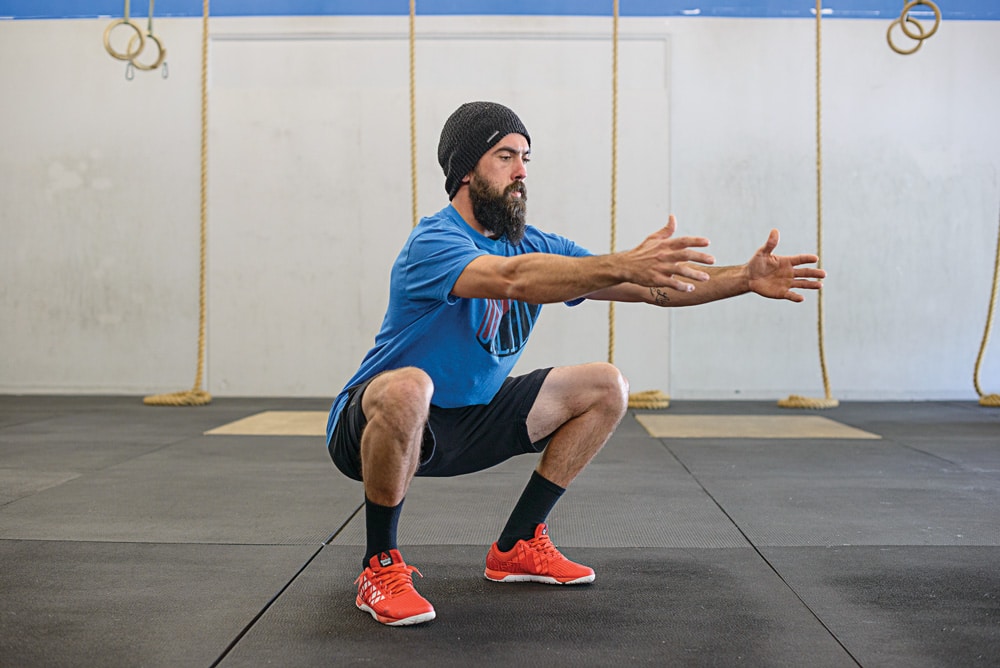
Don’t worry — there’s a simple off-the-water solution to correct this bad habit. Kyle suggests perfecting your “air squat”: a similar motion to a front squat in the gym but without the risk of load bearing. “To perform a proper air squat, you should be able to start from a standing position (riding or pre-landing position, feet shoulder-width apart), descend to the bottom of your squat with both feet flat on the floor, your weight distributed from the ball of your foot back through your heel (should be able to wiggle your toes in the bottom of your squat), your knees should track and be in line with your toes, and maintain an as-vertical-as-possible torso while maintaining your lumbar curve (keeping your chest up, not rounding your back).”
Now that you know the correct position, let’s talk about how it transitions to the water. “This air-squat movement should be the exact same movement you use to land on your board.” says Kyle. “Landing this way will help make your landings feel softer, and put you in a safe position to take impact and receive load. It will put your body in a great position to ride away from your tricks. Not only will landing in this way will help keep you injury-free, but your landings will become more consistent too.”
Start Smart with Shawn Watson
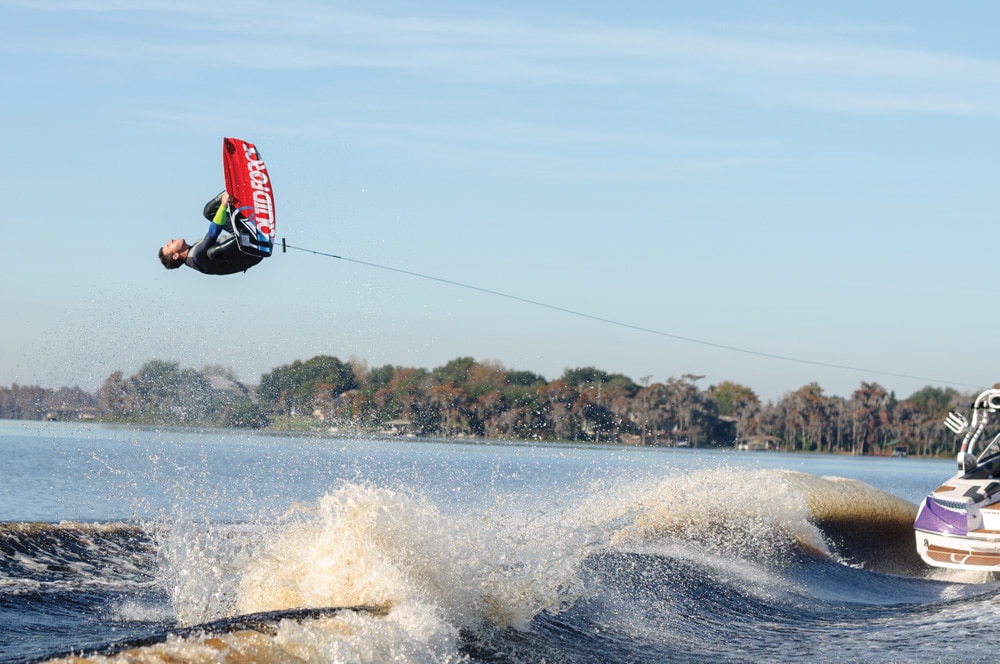
Let’s be honest here, we all know that it’s going to take some time to get your sea legs back after a long, cold landlocked off-season. To help you get your tricks back quickly and safely, we’ve teamed up with Shawn Watson to guide you through this process.
Most of all, don’t rush back into your hard tricks right away. Have a plan and ease into it. “I didn’t listen to my elders as a kid, and now wish that I had,” says Watson. “I’ve had two serious knee injuries in which both happened at the start of my set with no warm-up prior to my ride. Looking back, had I listened and had a legit pre-ride warm-up, I could’ve prevented a lot of injuries.”
So how do you warm up? The answer is simple. Start off small and incremental. You can even start out with some basic carves and ollies, then do them switch — it all depends on what level you’re at. Watson says: “I typically starting off with simple grabs, 180s, and some basic spins and flips. You want to make sure that you’re confident and in control edging into the wake so you’ve got your timing down.”
Once you’ve warmed up, take a moment to make sure that all of the separate pieces of your harder tricks work individually before you put them all together. “Before going straight into an indy tantrum to blind, for example, I’d take a few steps to get the basics dialed,” says Watson. “First I’d make sure I was fully comfortable with my indy tantrum and landing it with ease, then I’d build up my heelside backside 180s. I’d start with a few inside out — ollieing early from inside the wakes and landing down the face of the wake, then take it wake to wake, and then add an indy grab to it. Once I feel comfortable with that, I’d move onto the indy tantrum to blind, and incorporate all of the above into one.”
This principle can be applied to any trick you’d like to recover. Armed with this knowledge, you should start progressing even earlier in the season, setting you up for the best summer ever.




